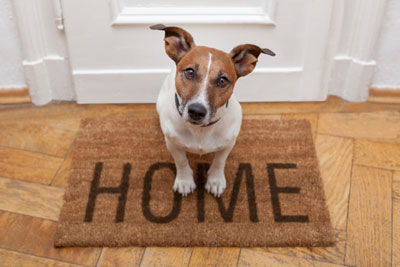 While they look sleek and smooth, hardwood floors and ceramic tiles are not the best type of flooring for our canine companions. Consider the impact this trend may be having on our family pets — all the way from our precious puppies to our most senior pooches.
While they look sleek and smooth, hardwood floors and ceramic tiles are not the best type of flooring for our canine companions. Consider the impact this trend may be having on our family pets — all the way from our precious puppies to our most senior pooches.
No-Traction Action
Dogs spend lots of time on our floors. The natural biomechanics of a dogs paw includes using their nails for traction. They flex their paws and engage their nails much like a baseball cleat digging into the ground. Unfortunately, hard nails can’t grip solid floors.
Many pet parents have seen their animals slip or slide within the house on these floors due to the decreased traction on these surfaces.
Reduced Mobility
Slippery flooring prevents a dog from getting enough traction to bend adequately and move their joints through their normal range of motion. For this reason, often over a period of time, a dog living in this environment can experience a decrease in knee and elbow flexion and hip extension.
Biomechanically speaking, the goal for your animal should be for its joints and muscles to interact at full range of motion, in a balanced manner and efficiently with gravity.
Make Floors Fido-Friendly
To help your dog get traction, consider these preventative options:
- Place rubber-backed mats at the entrance and exits of the home, feeding areas and areas of high traffic.
- Fit stairs with a runner.
- Consider increasing carpeting or the number of large area rugs.
A certified animal chiropractor, will have the expertise to provide a biomechanical assessment of your dog, while providing other helpful tips. Call us today for an appointment!
